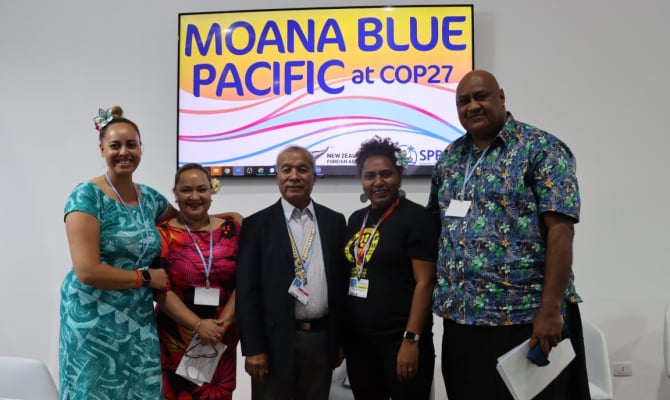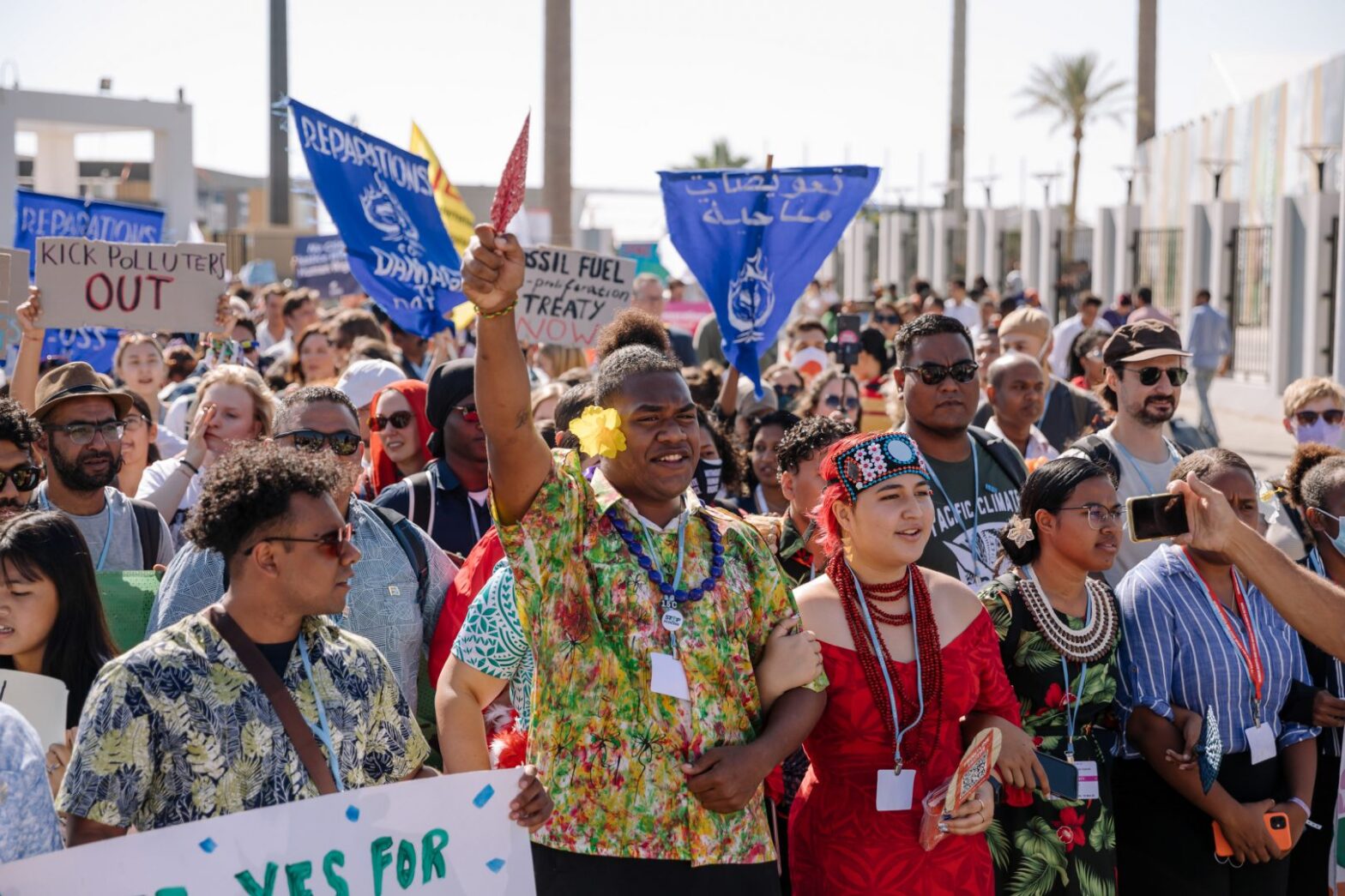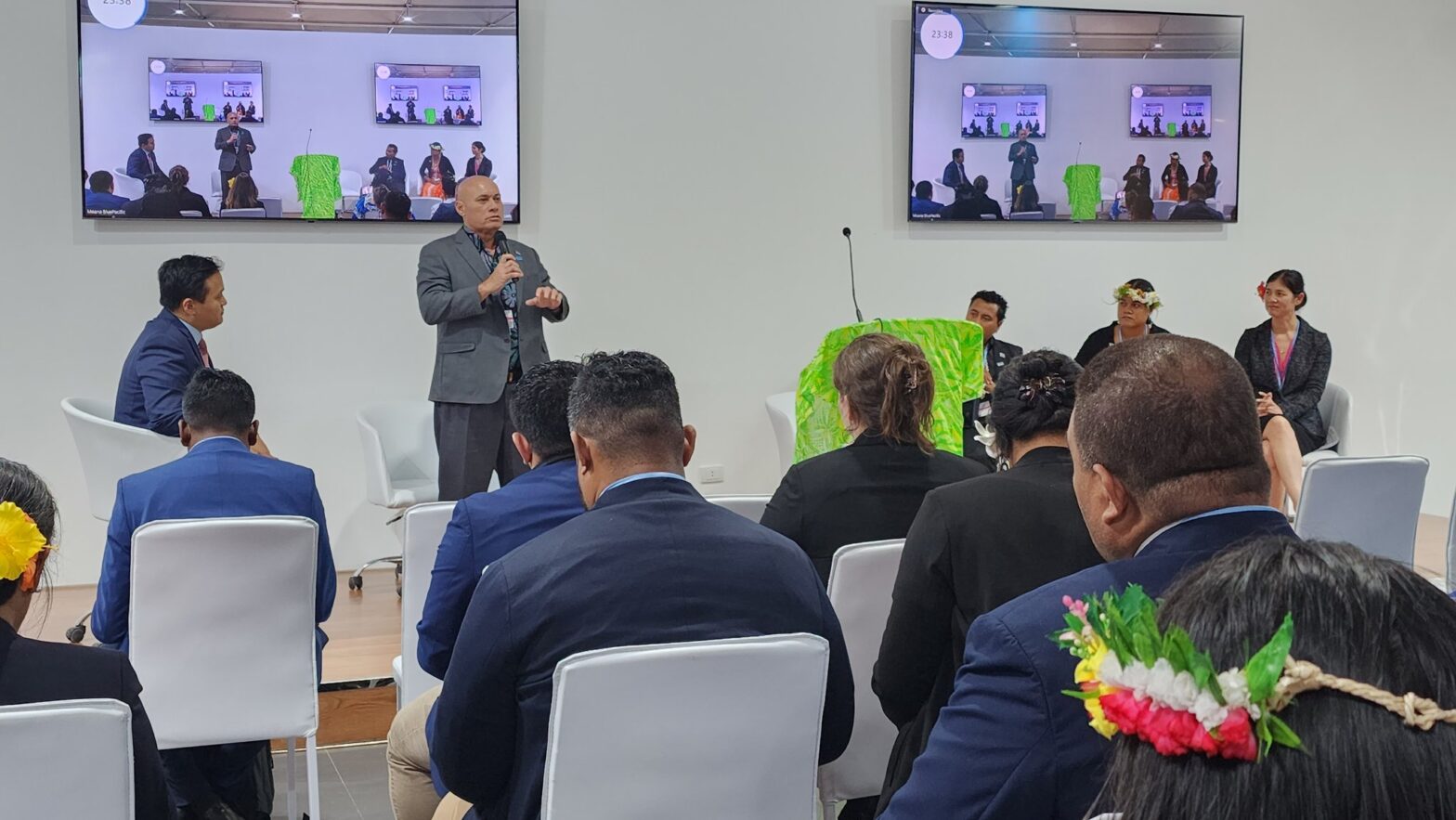Banaba in the central Pacific is a microcosm of what has happened to this planet. It’s a place that cannot be brought back into balance without focused and collaborative care, writes Katerina Teaiwa
Some years ago, an Australian friend gave me a necklace with a beautiful and distinct pendant.
The pendant had been in Helen Pilkinton’s family for decades and there were two more from a set of three that were given to each of her sisters.
It was made from a phosphate rock brought back from my homeland of Banaba – an island in the central Pacific about 3,000km from Australia – by her parents in 1935. It came from an ancestral place that many in Kiribati and Fiji understand to be taboo and haunted.
Dozens of Australian families have jewellery and decorations similarly made out of Banaban rock. They never appear in op shops or online marketplaces. They are passed down along with family stories of a distant life on a tropical island in the centre of the Pacific.
The rock is beautiful, but I cannot bring myself to wear it.
Helen’s father had been working as a medical officer for the British Phosphate Commissioners, a mining company jointly owned by the UK, Australia and New Zealand, on a place the Europeans called Ocean Island. This island was a 6 sq km raised coral atoll, 80 metres above sea level and almost completely made of high-grade phosphate rock. Its Indigenous people called it Banaba. The rock was a critical ingredient in manufactured superphosphate fertilisers that were being spread across thousands of farms in New Zealand, Victoria, South Australia, parts of New South Wales, and Western Australia.
But while Australians were trying to get “the best” out of lands stolen from Aboriginal communities, they were extracting, chemically transforming, and then spreading the lands of Indigenous Banabans and Nauruans across settler pastures.
Our island is now, and has been for many decades, severely damaged.
The mines turned the island into a forest of pinnacles and most Banabans were moved to Rabi in Fiji after the second world war. On Rabi, their rights, livelihoods, and cultural and political institutions have been precarious, and at times, tumultuous. The people of Rabi have no elected leaders and thus little representation for our needs in Fiji or Kiribati.
Generations of Banaban women tried hard to hold island, water and people together.
In the 1920s, Banaban women were concerned about the land disappearing beneath their feet. They were angry and upset with mining managers and the colonial administration that kept pressuring them to lease more land. The women of Buankonikai village told the resident commissioner of the Gilbert and Ellice Islands colony, Arthur Grimble: “We want to keep our land. We want to keep our land.”
In 1928, when Banabans refused to sign more leases, the British government ordered the compulsory acquisition of that land. Grimble, who had tried to dismiss their island as “idle” and only good for growing coconuts, was knighted in 1930.
When mining started in the area of Buakonikai village, the BBC described the scene: “The local women clung to their trees. If their trees were to be cut down, let them be cut down too.”
Today, the 300 or so people who still live on Banaba as caretakers, face more crises. The island of pinnacles, still filled with industrial debris, has run out of fresh drinking water. The bangabanga – the underground water caves that were once the only natural source of drinking water – were polluted by the removal of topsoil and 80 years of mining. Before displacement, only Banaban women could enter and collect water from these caves.
Earlier this year, after a period of drought, there were serious food shortages. The island that had “fed” so many hungry farms for most of the 20th century, no longer had enough for its own residents.
The piece of Banaba given to Helen in the form of a pendant, reminds us that what takes millions of years for the earth to grow, can, in extractive settler and colonial hands, be destroyed in the blink of an eye.
“Loss and damage” as a consequence of climate change is not just a current or future reality, it’s historically loaded with the unaddressed impacts of extractive empires. The term refers to things that are beyond the ability of humans to adapt to.
Banabans cannot adapt to an island where 30 to 50 metres of the surface has been completely removed. This island is where generations buried their ancestors under homes that were bulldozed, along with precious coconut trees. The land cannot return to fill the pinnacle holes.
Those who have lived on islands for centuries, whose ancestors approached the sea as highway, not barrier, lived fluid, complex lives grounded in land, sea, and kinship between people and environment. Pacific words for land and people are the words for people, bodies. Te aba is the land and people. Banaba is te buto – the navel.
Our island is a field of bones with the flesh removed.
We must protect Banaba, not wear it or mine it
Banaba is a microcosm of what has happened at a planetary level. It is a place that cannot be brought back into balance and made habitable again without focused, collaborative, inspired, well-resourced and committed care and problem solving. Five governments are responsible for what happened here – Kiribati, Fiji, Australia, New Zealand and the UK. So many historical, political and economic stakeholders in such a small rock in the middle of Oceania.
As recently as a few weeks ago, another Australian mining company proposed to re-mine whatever phosphate is left.
Fertiliser prices are soaring. Phosphate is commercially valuable and still critical to mass agriculture. This is the global agriculture we all depend on that has transformed Pacific diets for the worse, and is significantly contributing to climate change.
Right now, we have to be custodians of Banaba and protect it, not wear it or mine it.
My elder sister, Teresia Kieuea Teaiwa, proposed that we should make “island” a verb.
Teresia was an internationally acclaimed poet, an award-winning teacher, a globally cited feminist scholar and an activist for Pacific sovereignty and self-determination before she died from pancreatic cancer aged 48.
She understood well that Pacific islands were constantly viewed as static. Backwards. Underdeveloped. Lacking capacity and vulnerable. Islands and people were seen as fixed to the floor of a vast, overwhelming, rapidly rising ocean.
“As a noun, it’s so vulnerable to impinging forces,” she wrote in a poem. “Let us turn the energy of the island inside out. Let us ‘island’ the world! Let us teach the inhabitants of planet Earth how to behave as if we were all living on islands! For what is Earth but an island in our solar system?”
This opinion was written by Katerina Teaiwa (a Banaban, I-Kiribati (Tabiteuea) and African American woman from Fiji, and a professor of Pacific studies in the school of culture, history and language at the Australian National University), originally published at The Guardian on 02 November 2022, reposted via PACNEWS.



